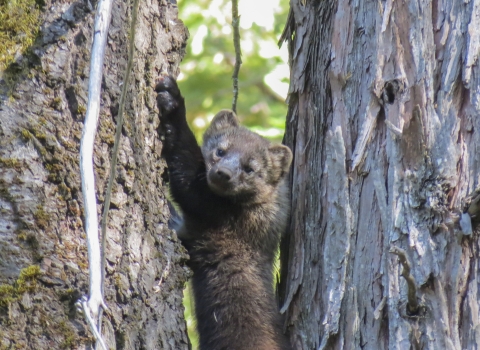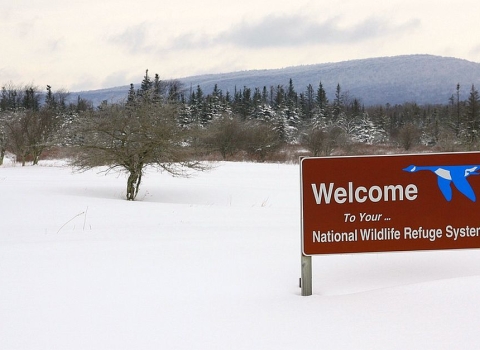Sometimes the care of endangered species is unexpected. That was the case for staff at Fresno Chaffee Zoo and Yosemite National Park when they took in a six-week-old Southern Sierra Nevada fisher that was found abandoned in its den in the Sierra National Forest. Thankfully, multiple organizations came together to help the tiny orphan.
For the past several years, biologists have been studying the movements of endangered Southern Sierra Nevada fishers in Yosemite National Park and Sierra National Forest. Not much is known about the elusive, dark brown member of the weasel family that scampers through the forest, so biologists captured and collared several fishers and released them back into the wild.
“The collars help biologists track where the fishers roam and where dens may be located,” said Rick Kuyper, Southern Sierra Nevada Division Supervisor of the U.S. Fish and Wildlife Service’s Sacramento Field Office.
But in mid-May, a female collared fisher stopped moving.
Biologists from Yosemite National Park used the collar’s signal to determine the female’s last known location and assess any patterns in her movement. Then, they trekked into the woods to investigate. The last collar signal led them to the individual and found that she had been killed by a predator. The collar’s data also led them to a tree, and there, they found a six-week-old fisher kit in a tree cavity. The kit was malnourished and dehydrated.
The kit was taken to Fresno Chaffee Zoo on May 15, 2024, to receive neonatal care by a National Park Service Fisher Technician under the guidance of the Zoo’s veterinary team, as well as veterinarians from the California Department of Fish and Wildlife. The veterinary team worked diligently to stabilize the kit. They bottle fed him and performed regular health checks. In just a few weeks, the fisher kit has shown remarkable progress. Both eyes have opened, and he’s rapidly gaining weight.
“We are grateful for the amazing collaboration on this project. The expert advice from veterinarians, wildlife rehabilitators, and fisher experts has been invaluable,” said Sarah Stock, Supervisory Wildlife Ecologist with Yosemite National Park. “The Fresno Chaffee Zoo veterinarian has been key to the kit’s progress, and we are hopeful that this fisher kit will successfully return to the wild.”
Steps are being taken to give the kit the care and attention he would have received from his mother, but also to prepare him for life in the wild. A single National Park Service technician feeds and cares for the kit to minimize human interaction. The technician’s interactions with the kit are intended to resemble what a mother would do with the kit – feeding and a bit of play. The technician does not talk to the kit, and stuffed animals are used for play and cuddling. Fisher pelts and tree branches from the area where it was found were placed in the kit’s enclosure to make it as natural smelling as possible.
The kit’s care will progress into less hands-on methods. In the past week, he has transitioned from bottle feeding to eating solid food from a bowl. Next, he will transition to eating foods that would be found in the forest and methods will be used to encourage hunting and other survival skills.
“We are honored to play a role in the recovery of this endangered species and help our partners in a time of need, coming together to save wildlife,” said Nicole Presley, General Curator at the Fresno Chaffee Zoo. “Our goal is to ensure the fisher kit is healthy and strong, ultimately preparing it for a successful return to its natural habitat.”
Following his care at Fresno Chaffee Zoo, the fisher kit will be returning to Yosemite National Park where it will continue to receive specialized care leading to a planned release. Release plans are still under development, but there’s no doubt that he’ll go back into the wild wearing a collar just like his mother.
“By having collared fishers in the wild, we can better determine instances where a fisher kit may be abandoned and take steps to help that individual survive. Because this species is so rare, helping young fishers make it to adulthood is a critical part of the species’ recovery,” said Kuyper.








